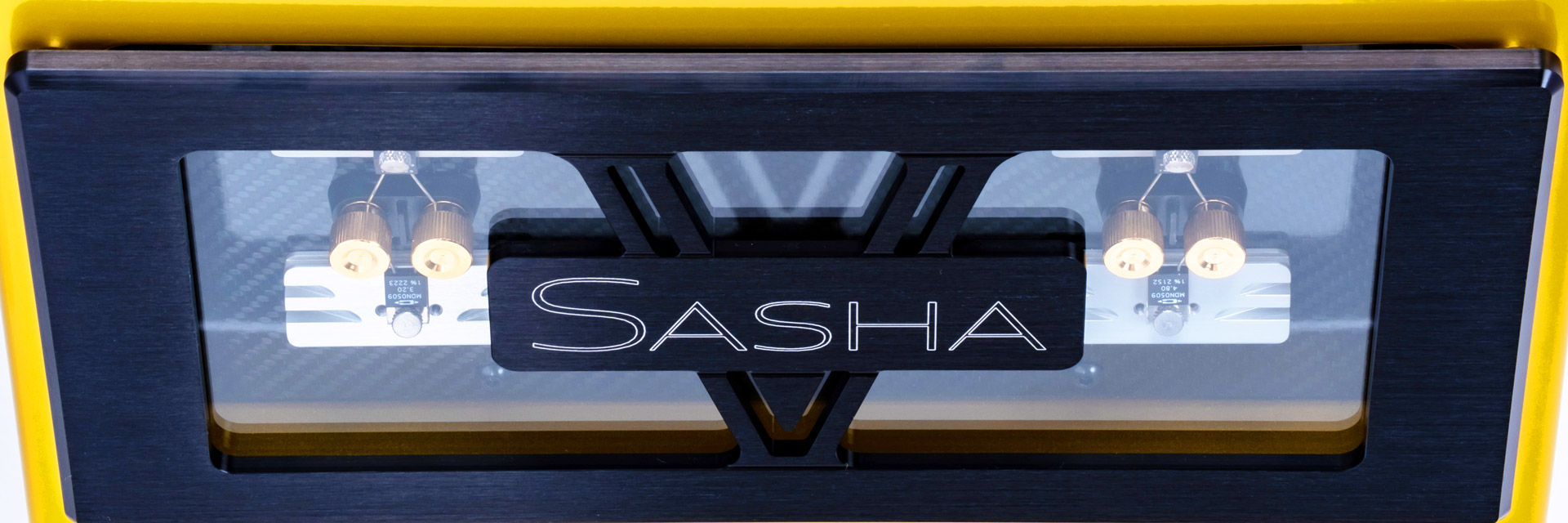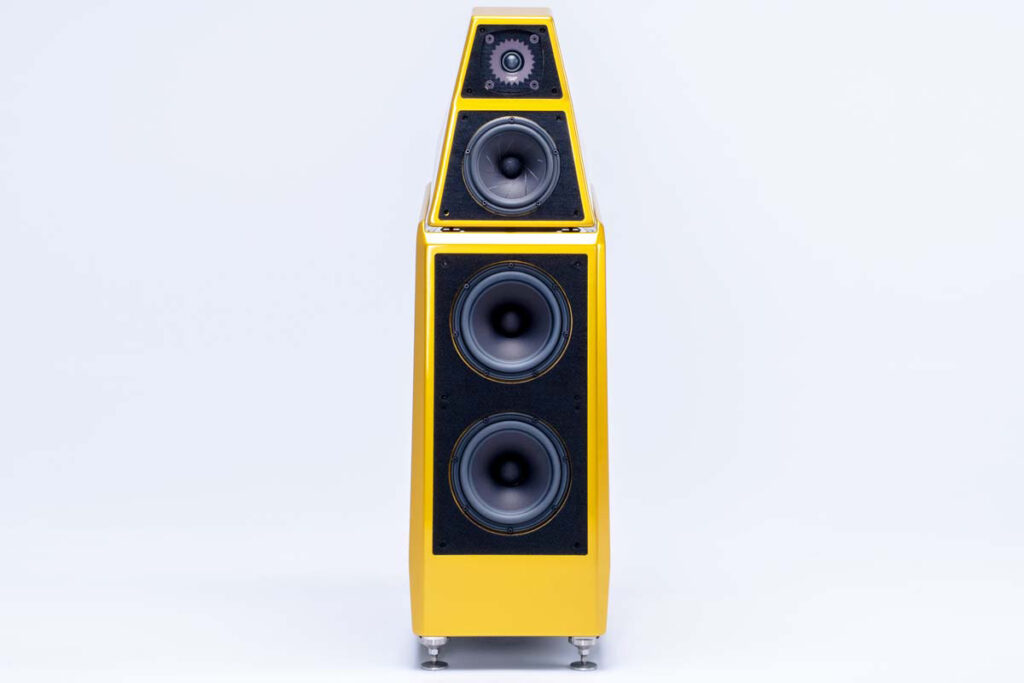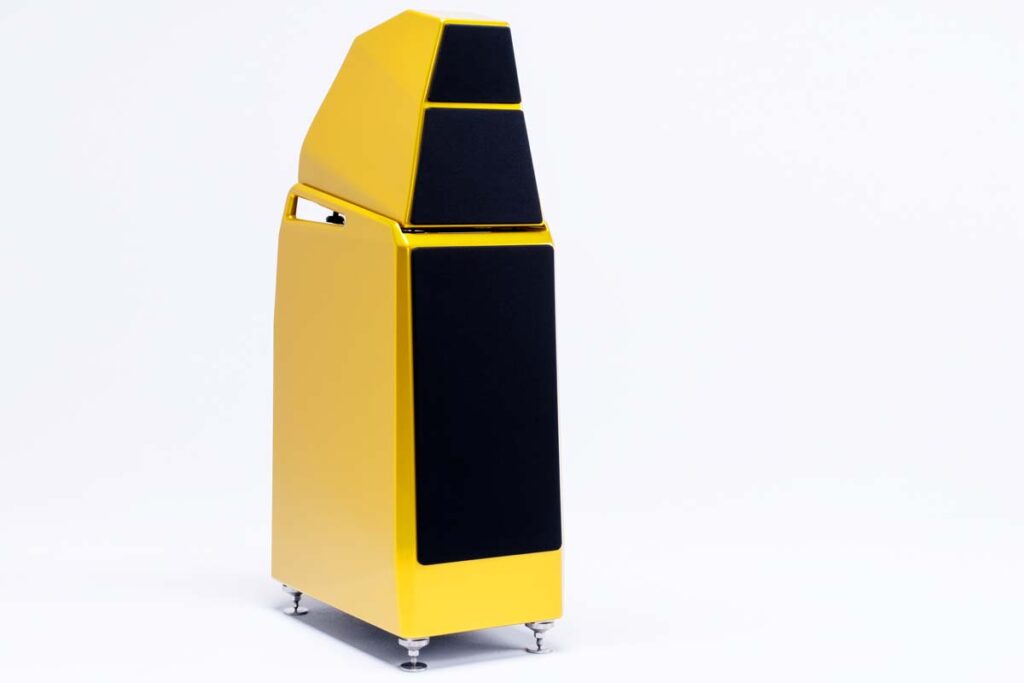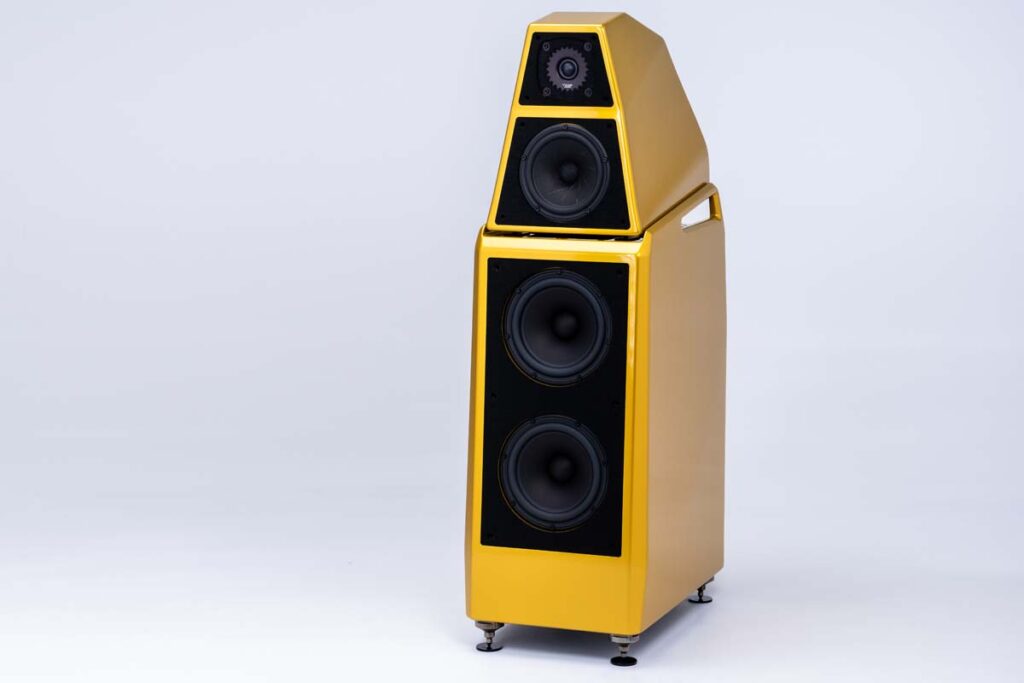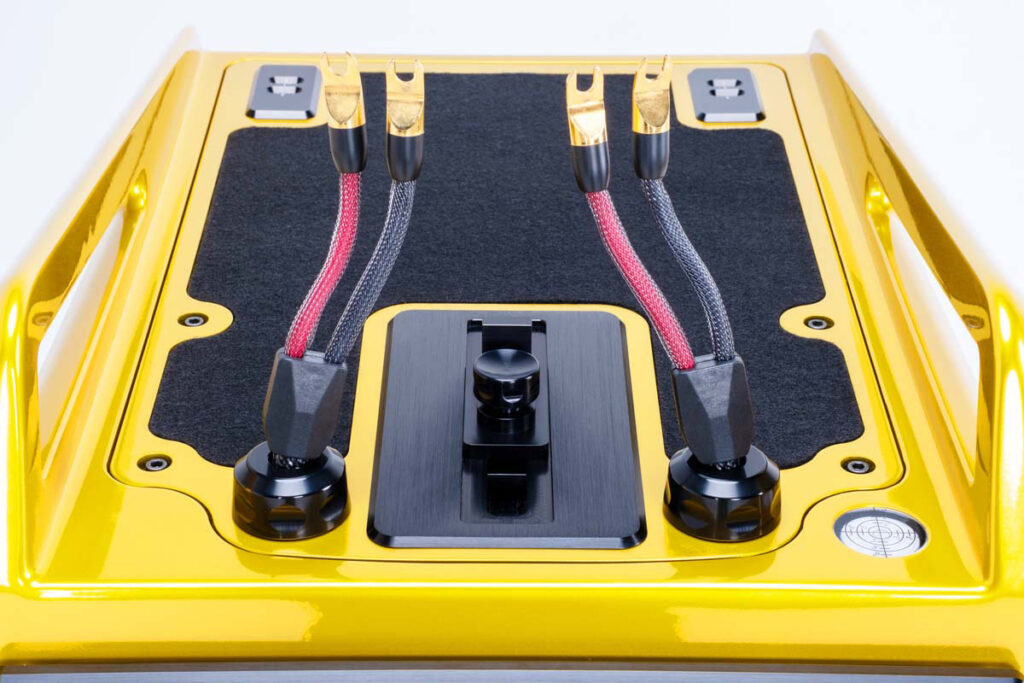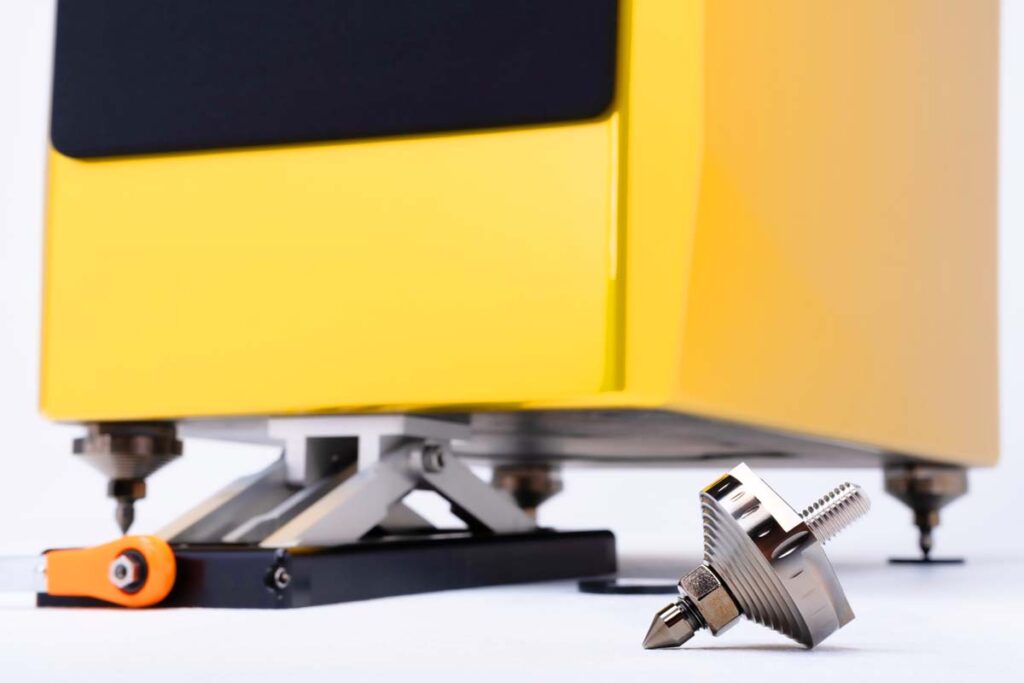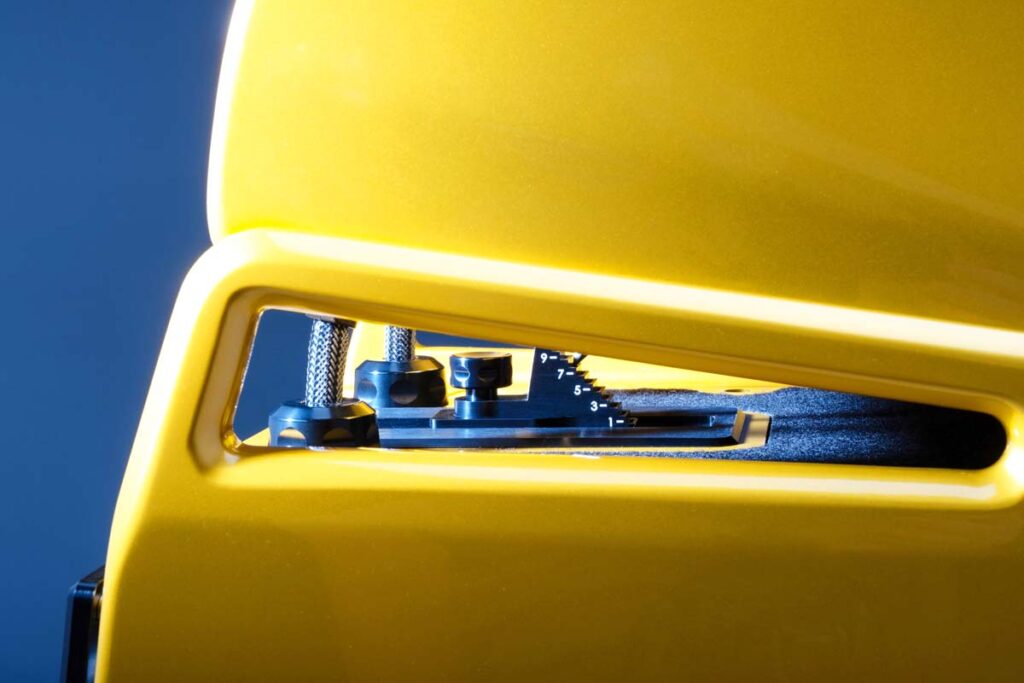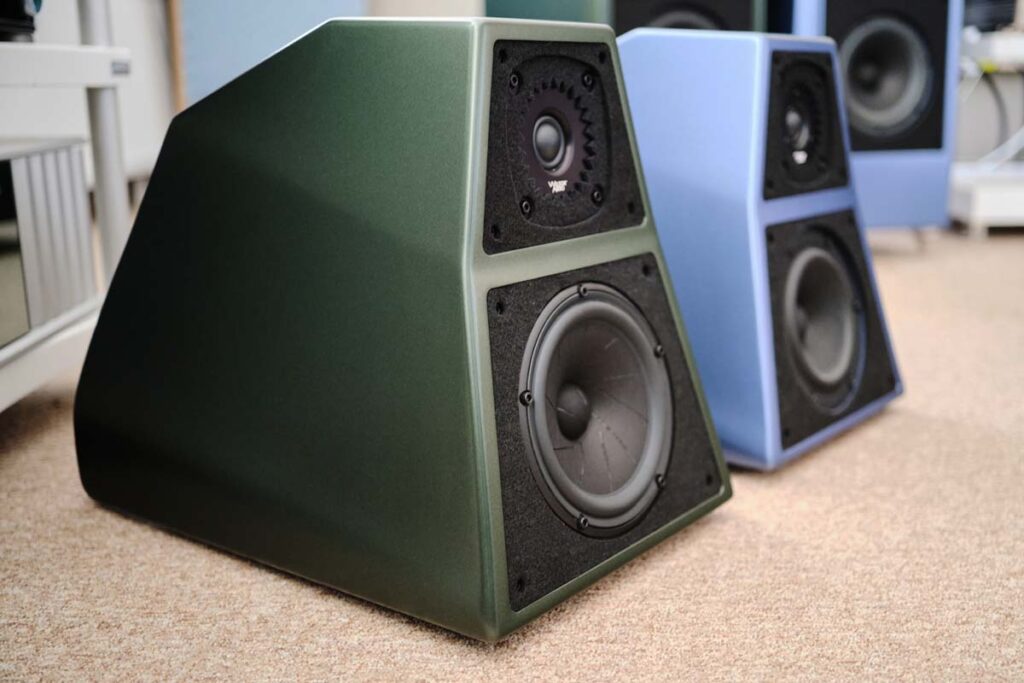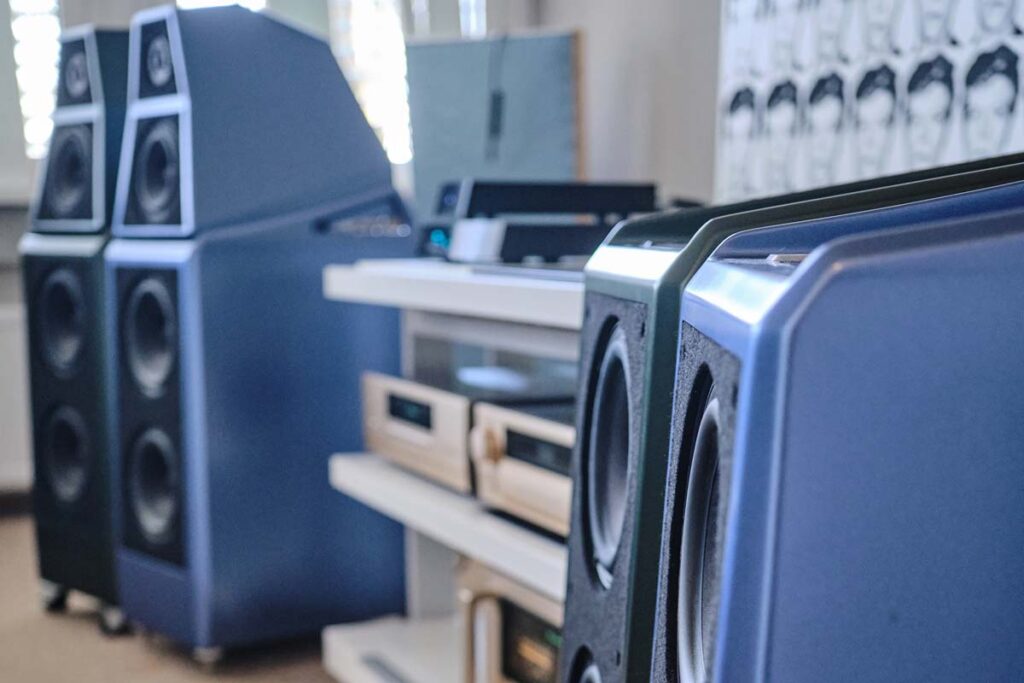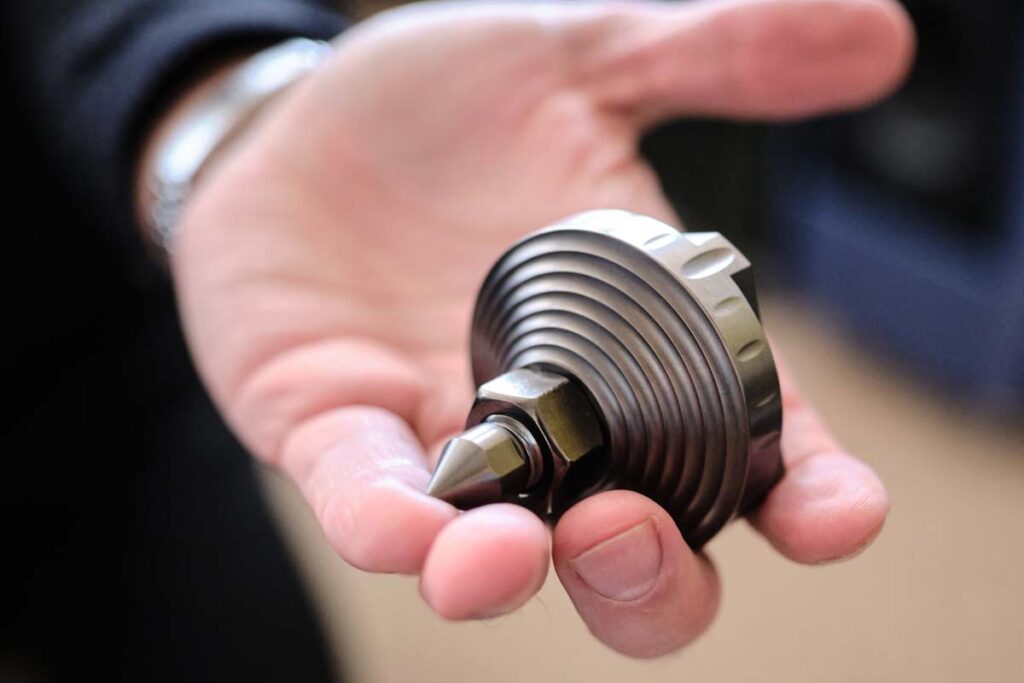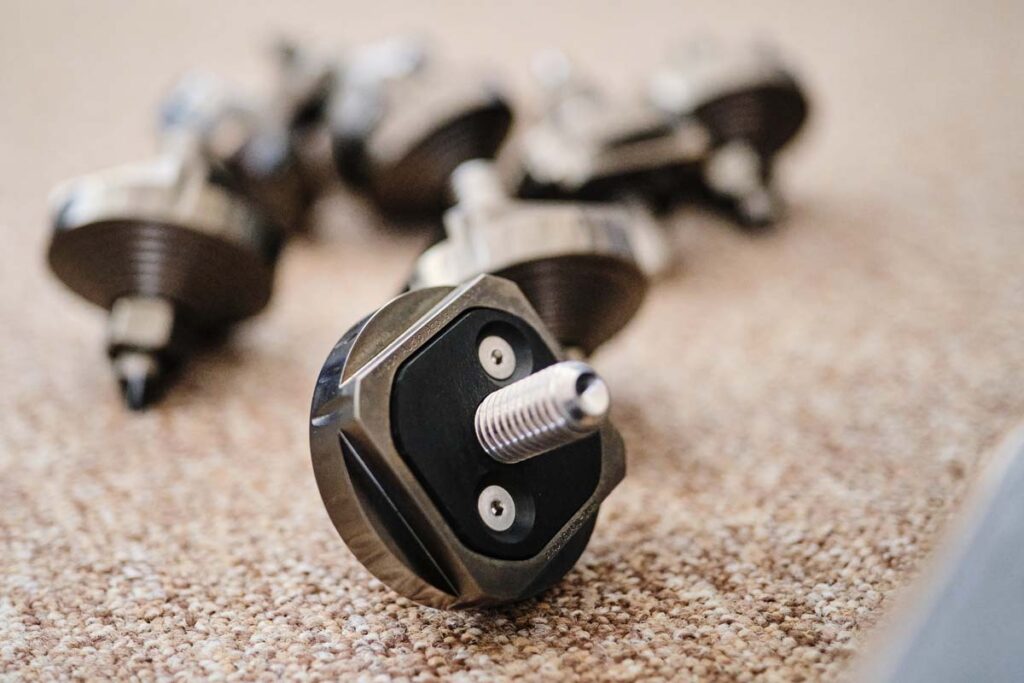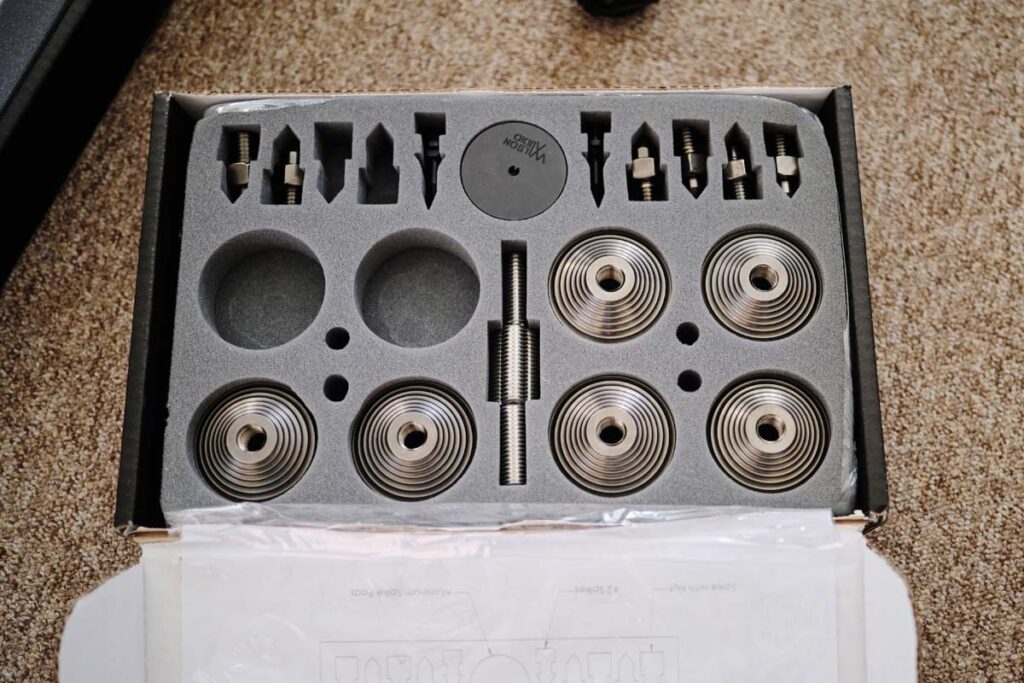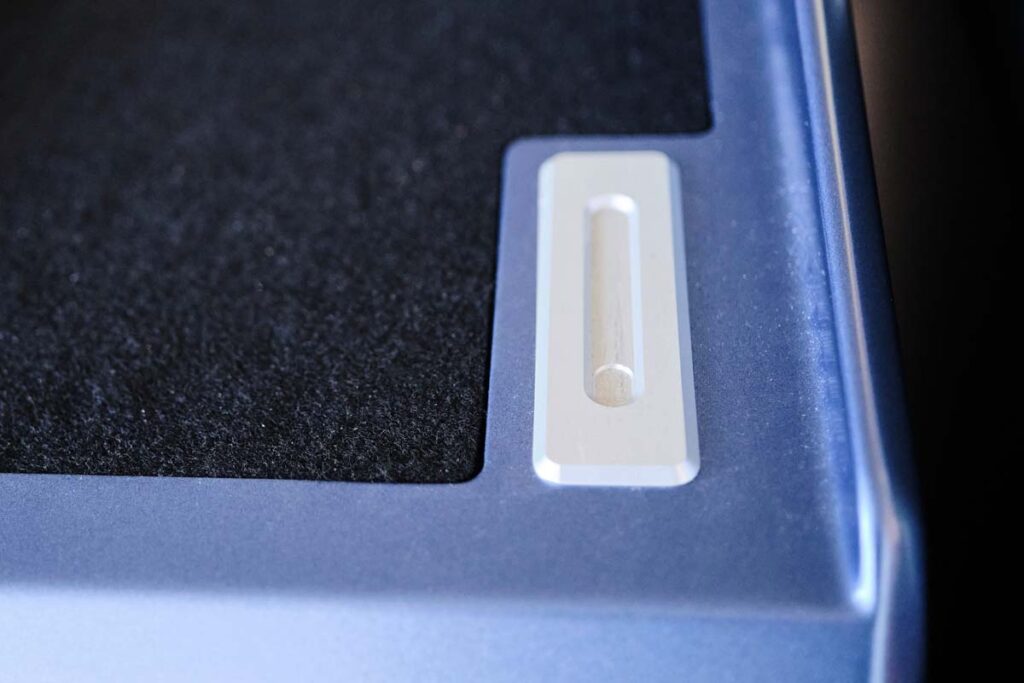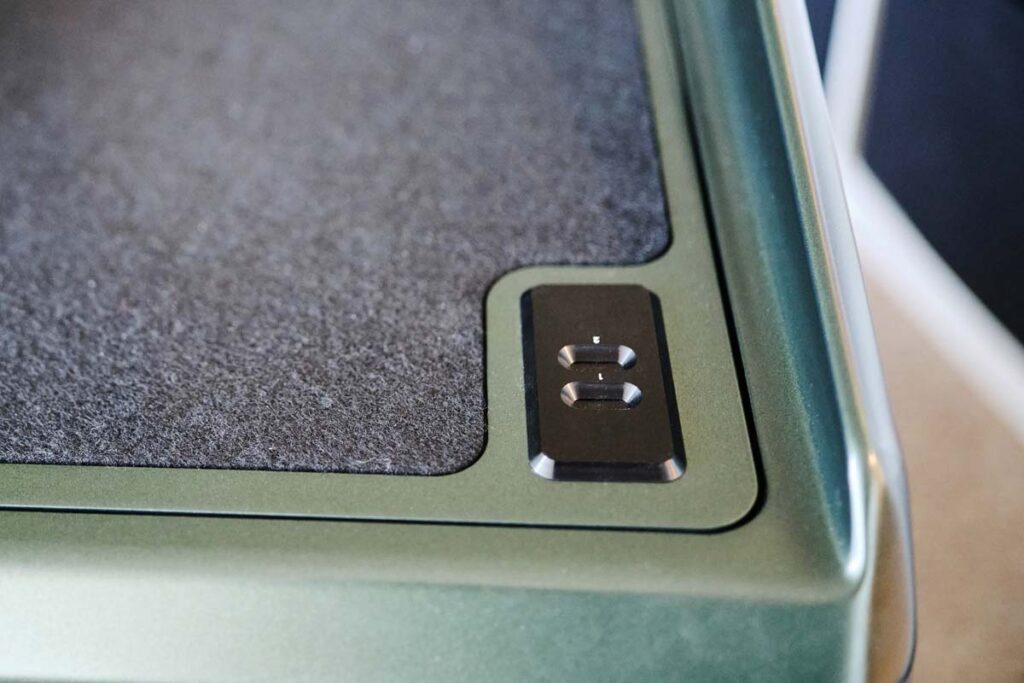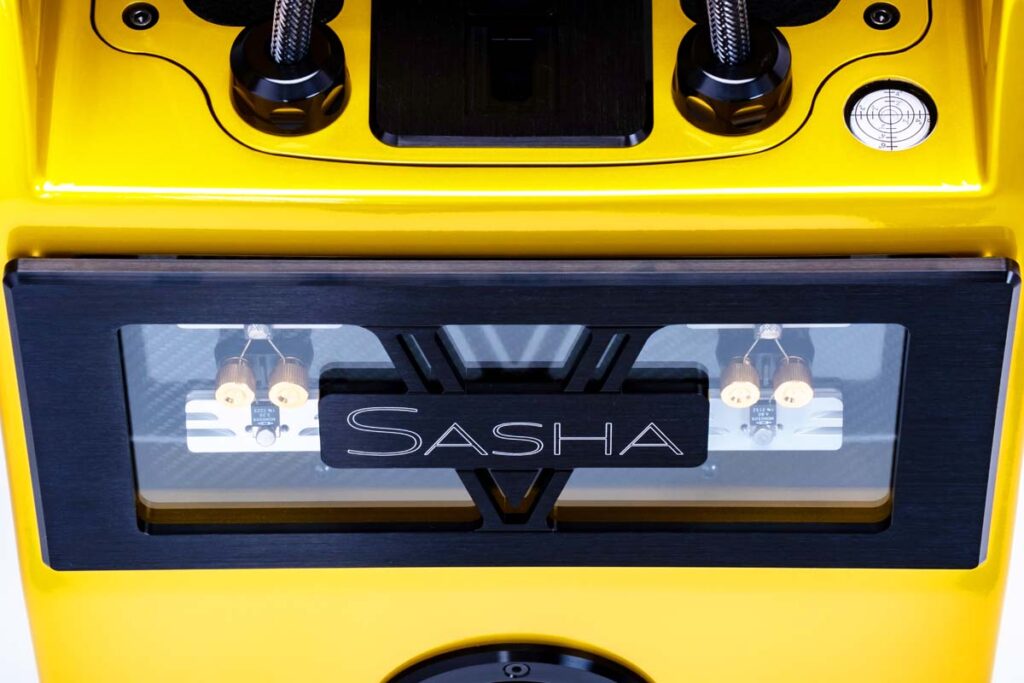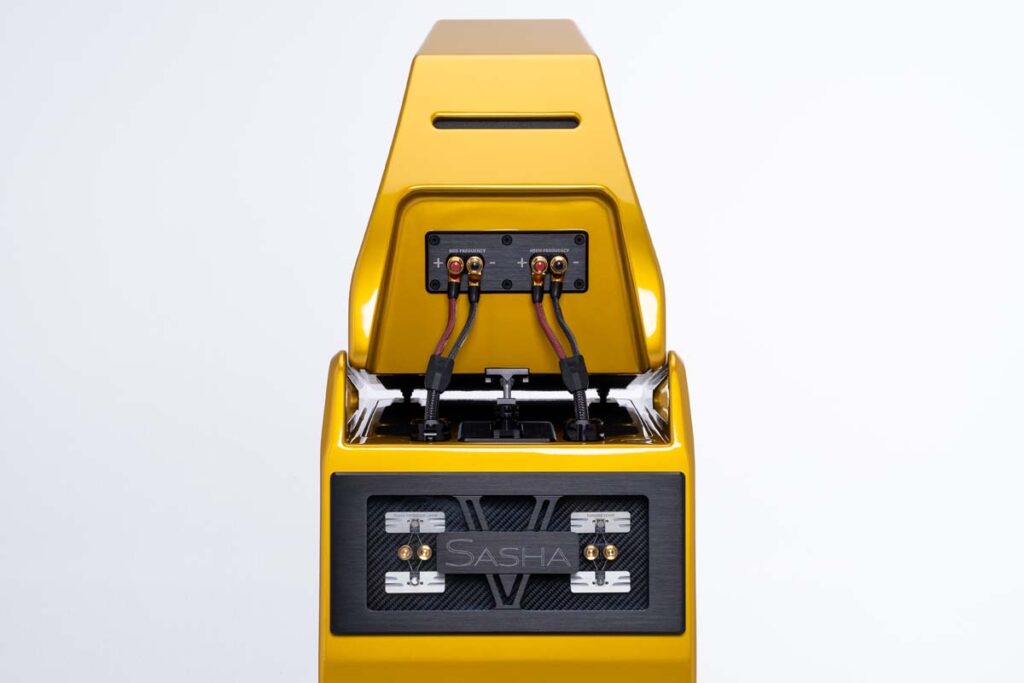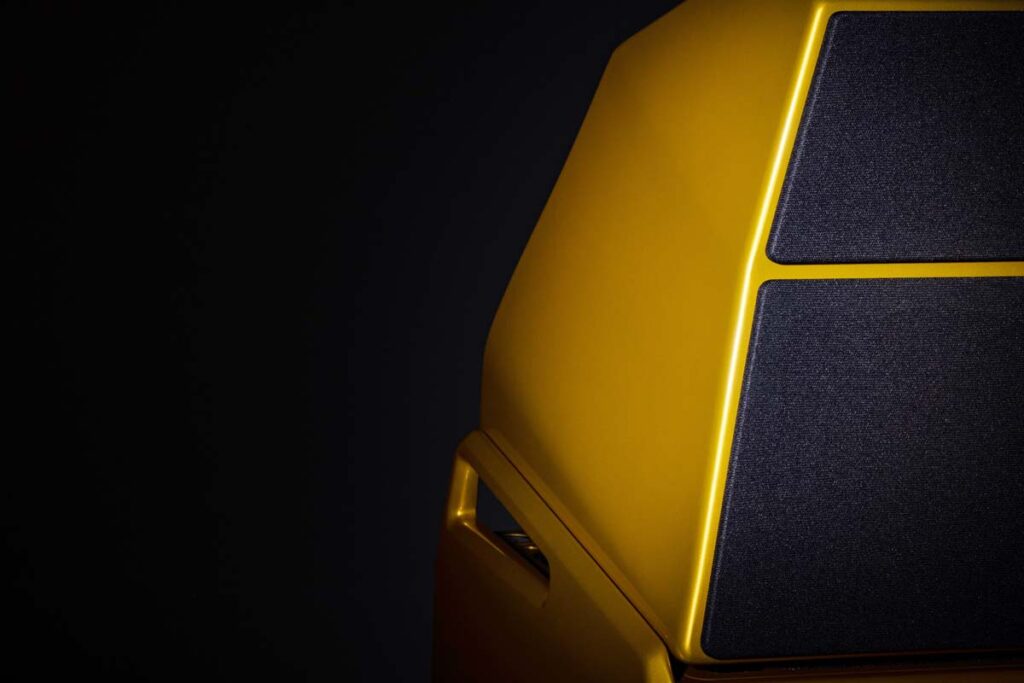The “cost-no-object” approach has always been standard at Wilson Audio. One of the results of this design philosophy is the Sasha DAW – which now has a successor in the form of the Sasha V. But can a no-compromise-loudspeaker really be significantly improved after just a few years? That’s what we’re here to find out.
How often do we get an opportunity to experience technological progress first-hand? And how much potential for improvement is there in the first place? These are questions we need to ask when it comes to hi-fi in general and loudspeakers in particular. After all, we have had comprehensive measurement tools at our disposal that are orders of magnitude more accurate than the human ear for quite some time now – and also for quite some time now, we’ve been able to build loudspeakers that behave quite flawlessly according to these measurement methods. It is therefore fair to say that loudspeakers are essentially perfected.
At the same time, however, it must also be clear that true perfection can only be a North Star; an asymptote that can be approached, but realistically never reached. Conversely, this means that no product, no matter how good, cannot be further improved by fine-tuning the design or by completely new technological approaches. This is exactly what the high-end is often about: exploring what is technically possible without any regard for practical or cost constraints.
Recently, we were presented with an opportunity to answer the question of how much more five years of research and development can get out of a state-of-the-art loudspeaker in a direct comparison of “old versus new”: When the new Wilson Audio Sasha V rolled into our office, its predecessor with the version name DAW was already waiting for the test of strength. It has been on permanent loan to us for a number of years now and serves us well as a constant reference – so we were all the more excited to see how it would fare against the newer incarnation of itself. Judging by its visual appearance, the DAW must already have been pretty damn close to perfection: even when you put them back-to-back, you have to look twice to find any differences. After we had wheeled the V out of their wooden transport boxes, placed it next to its predecessor and placed the mid-high modules on top, we were able to gradually discover small subtleties that indicate the model upgrade: The dimensions have changed minimally, as has the shape of the “guard rails” enclosing the mid-high module, which may absolutely be used as handles when moving the speaker – all differences are immediately forgotten as soon as the speaker stands on its own.
Meet “V”
The eponymous difference is actually the most inconspicuous of them all: “V” does not stand for “Roman five” (the V is the fourth Sasha model), but for the new V material, which is used as top plate on the woofer module; you can tell by the fact that there is now a seam between it and the rest of the housing. The use of these mysterious “materials” has always been a distinguishing feature of the American loudspeaker manufacturer. The phenolic resin-based materials are developed in Provo in different formulations depending on the intended use and are labeled with letters for identification. The advantage: the precise composition allows Wilson Audio to tailor the material properties exactly to the intended application. The disadvantage: production and processing are fraught with ludicrous effort and cost, as you can read in our report on our Wilson Audio Factory Visit.
In contrast to the X material used for the cabinets and the S material used for the baffles, the V material is relatively soft and tough; its primary task is not so much mechanical strength, but above all the absorption of vibrations. On the top plate of the bass unit, it is intended to ensure that the mid-high module positioned on top is shielded from vibrations even better than before. Equally inconspicuously, the new composite material provides vibration control at the speakers’ coupling points to the floor: The Sasha V is supplied from the factory with spikes called “Acoustic Diode” – although the term “spike” does the speaker feet injustice. As rigid coupling always transmits vibrations in both directions, the Acoustic Diodes establish contact between the spike and the cabinet via a block of V-material in order to achieve a small degree of damping, which is intended to keep impact sound away from the transducer.
The 4WD of midrange drivers
Much more striking is the new midrange driver, which has not only increased slightly in diameter from 17 to 18 centimeters, but whose cone now has distinctive slots filled with a shiny, gelatinous material. These are intended to dampen resonances within the cone and give the driver away as a member of the highly acclaimed ScanSpeak Revelator family. However, this statement falls a little short, as Wilson Audio has given the driver a completely new drive unit under the name “QuadraMag”. Instead of a ferrite or neodymium magnet, four AlNiCo magnets are used here – a material that, put simply, sacrifices some magnetic flux density on the altar of superior magnetic field linearity. While the tweeter has been carried over from the larger models (albeit with a redesigned rear wave damping chamber), a set of new copper foil capacitors developed and manufactured in-house makes its debut in the Sasha V – how many manufacturers do you know that make their own capacitors?
So in the end, we do have more innovations than a cursory glance reveals. But if we are being honest, we expect nothing less from the new edition of an ultra-high-end loudspeaker – the best of five years ago, and then a good second helping on top. To come back to the initial question: How does all this make itself felt in terms of sound? I deliberately approached the matter without any preconceived expectations as best I could; I was just as prepared for an acoustic quantum leap that would relegate the DAW to the history books of hi-fi history as I was for the sobering realization that the sonic progress would fly right under the human perception threshold.
More control points
Both Wilson Audio itself and the German distributor Audio Reference make it a point of honor for a speaker of this class that customers don’t have to worry about setting up their new treasures themselves; the initial setup by an expert is included in the scope of delivery, so to speak. It also makes sense when you consider that a Wilson Audio requires even more expertise than other speakers – after all, it’s not just a matter of finding the right distances from the wall and the right toe-in, but also of adjusting the mid-high module for the best time alignment at the listening position. Before we get down to business, Audio Reference sends a team to set up and adjust the new Sasha. It is here that we notice two further improvements to the Sasha V: While we are already familiar with the “staircase” for vertical adjustment of the radiating axis from our permanent listening room guest DAW, the front pivots of the head section on the new model can now be locked in two different positions, allowing their distance from the listening position to be adjusted. What we particularly liked, however, was the small spirit level built into the lid of the bass module, which makes it so much easier to level the speakers.
Considering how many adjustments you can make to the speakers, plus the fact that we set up not one but two pairs, it didn’t take too long until both were ready for the showdown in the tried and tested ABAB position – the Sasha V on the left on both sides, the DAW on the right. Already when checking the stereo center using Suzanne Vega’s “Tom’s Diner” (Retrospective), we noticed a small difference in character between the two: The fact that the voice is nailed to the center of the stage in both passes without the slightest hint of coloration is no surprise to anyone – it’s just one of the reasons why the Sasha has served as an acoustic benchmark in our listening room for years. However, the singer seems to have noticeably more presence over the V and also a little more lung volume. This impression is reinforced by Sufjan Stevens with “For The Widows In Paradise, For The Fatherless In Ypsilanti” from his album Michigan: Stevens’ rather thin voice seems slightly more focused, while the harmony vocals and trumpets, which start later in the track and are projected really far back into the room, carry a touch more authority. Not that the DAW showed any signs of deficiency here. The controlled and powerful fundamentals and bass range has always been a key feature of practically all Wilson Audio models, and the Sasha DAW is no exception.
However, none of the pieces played so far are real touchstones for the lower registers, so Mussorgsky’s Night on the Bald Mountain is the next to go into the drawer. Here, too, the kettledrums and the mighty brass section, which start right at the beginning, come across the new model with a little more fullness and at the same time a tad more contoured. Does this mean that the DAW has been outclassed? Not in the slightest – the impressions described above gradually emerged over the course of numerous listening sessions. When we subjected each other to blind tests at one point, the results were not always clear for some tracks, while for others there could hardly be any doubt. The Sasha V is another incremental step towards the unattainable ideal of perfection.
The elephant in the room
At this point, a not insignificant detail needs to be addressed: the price hike. Whereas the last price for a pair of Sasha DAWs was a little under 50,000 euros, the new model will set you back an impressive 64,000 euros. With such a leap, the question inevitably arises as to whether the progress is worth it. Of course, the refinements mentioned above can be used to rationalize the price difference – after all, both the cabinet construction and the new midrange driver are significantly more elaborate than before. The general jump in inflation in recent years could also be cited, and a combination of these two factors at least doesn’t make the price development appear completely irrational. However, anyone who indulges in this kind of arithmetic is missing the point to some extent – after all, we are talking ultra-high-end here. Anyone who shops in this league is aware that they are moving deep into the realms of diminishing returns and is willing to accept this. At the limits of what is technically possible, any further improvement is always associated with enormous effort and corresponding costs, and customers who buy this type of product readily pay for the mere fact that the manufacturer does not employ a red tape agent who ensures that you get 98 percent of the performance for 90 percent of the price – for the simple reason that in this price range, a 98 percent loudspeaker isn’t going to impress anybody. For 64,000 euros, you simply get the best piece of loudspeaker engineering that Wilson Audio is capable delivering given the form factor. The price is merely a logical consequence of the effort involved, and the result can once again be regarded as the current state of the art.
Accompanying Equipment
CD player: Ayon CD-3sx, Audio Note CD 3.1x, Accuphase DP-570 | Network player/DAC: Lumin X1, Soulnote D-3, Aavik SD-880 | Turntable: AVM Rotation R5. 3 MK2 | Preamplifier: Accuphase C-2300, Phasemation CM-2200 | Integrated amplifier: Line Magnetic LM-88IA, Aavik I-580 | Power amplifier: Burmester 216, Accuphase P-7500 | Speakers: Wilson Audio Sasha DAW, Nubert nuZeo 15 | Rack: Solidsteel, Finite Elemente, Creaktiv | Cables: AudioQuest, HMS, in-akustik, Vovox
Loudspeaker Wilson Audio Sasha DAW
Concept: 3-way bass-reflex floorstanding loudspeaker with separate enclosures for bass and mid/high unit | Configuration: 1 x 25 mm CSC (Convergent Synergy Carbon) dome tweeter, 1 x 18 cm midrange driver with AlNiCo Quadramag motor, 2 x 20 cm woofers | Sensitivity (1 W/1 m): 88 dB | Impedance: 4 Ω (minimum: 2.36 Ω at 82 Hz) | Frequency response (±3 dB): 20 Hz to 32 kHz | Recommended power: > 25 W | Finish: Obsidian Black, Galaxy Gray, GT Silver, Quartz, Carbon, Medio Grigio; numerous other colors at extra charge | Special features: Structure and baffles made of X and S material, V material for resonance control at strategic points, “Acoustic Diode” speaker feet | Dimensions (W/H/D): 37/114/61 cm | Weight: 111 kg | Warranty period: 10 years | Pair price: around €64,000
Audio Reference
Alsterkrugchaussee 435
22335 Hamburg
Phone +49 40 53320359

